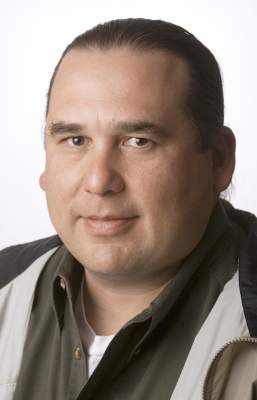By Kate Prengama, Yakima Herald-Republic

Federal funding cuts pose dire consequence for the ability of tribes to manage their land and reduce wildfire risks, a Yakama Nation leader told a U.S. Senate hearing Wednesday in Washington, D.C.
Phil Rigdon, the director of the Yakamas’ natural resources program and president of the Intertribal Timber Council, told the Senate Committee on Indian Affairs that programs that once kept tribal forests healthy are now “running on fumes.”
“The consequences of chronic underfunding and understaffing are materializing,” Rigdon told the committee. “The situation is now reaching crisis proportions and it’s placing our forests in great peril.”
There are more than 18 million acres of tribal forest lands held in trust by the federal government, but the Bureau of Indian Affairs gets far less funding per acre for forest management and fire risk reduction than national forests.
Funding has fallen 24 percent since 2001, Rigdon said, and that can have dire consequences.
For example, last year when the Mile Marker 28 Fire broke out off U.S. Highway 97 on the Yakama reservation, only one heavy equipment operator and one tanker truck were able to respond immediately because that’s all the current federal budget supports, Rigdon said in an interview before the hearing.
“Back in the early 1990s, when I fought fire, we would have three or four heavy equipment operators,” he said. “Someone was always on duty. That’s the kind of thing that’s really changed.”
The Mile Marker 28 Fire eventually burned 20,000 acres of forest.
Rigdon noted that the dozens of tribes around the country that are represented by the Timber Council are proud of the work they do when resources are available.
“If you go to the Yakama reservation and see our forests, we’ve reduced disease and the risk of catastrophic fire. If we don’t continue to do that type of work — if we put it off to later — we’ll see the types of 100,000- or 200,000-acre fires you see other places,” Rigdon said.
Currently, there are 33 unfilled forestry positions at the BIA for the Yakama Nation, he added. That limits the program’s ability to hit harvest targets, which hurts the tribe economically and affects the health of the forest.
A 2013 report from the Indian Forest Management Assessment Team found that an additional $100 million in annual funding and 800 new employees are needed to maintain strong forestry programs on BIA land nationwide. The current budget is $154 million.
In addition to the concern over future funding, other members of the panel also discussed the different approaches to forest management by tribes and the Forest Service.
“We’ve done a good job maintaining a healthy forest on a shoestring budget, but the Forest Service is not maintaining its adjacent lands,” said Danny Breuninger Sr., the president of the Mescalero Apache Nation in New Mexico.
Committee member Sen. John McCain, R-Ariz., cited a 2011 Arizona fire as an example of how tribal efforts can succeed. In the wake of a 2002 fire, the White Mountain Apache conducted salvage logging and thinning work while the adjacent national forest did not. When fire hit the region again, federal forests were devastated, but the treated tribal forests stopped the fire’s spread.
Jonathan Brooks, forest manager for the White Mountain Apache, told McCain that lawsuits prevent the Forest Service from doing similar work.
“Active management gets environmental activists angry,” Brooks said. “But what’s more hurtful to the resources: logging, thinning and prescribed fire, or devastating fires?”
Rigdon said the Intertribal Timber Council would like to see increased abilities for tribes to work with neighboring national forests on management projects like thinning, which could support tribe-owned sawmills and reduce fire risks.
The Yakama Nation is working with the Forest Service on developing such a collaborative project, as part of a new program known as “anchor forests.” It’s a pilot program currently being used on a few reservations, and the panelists at the hearing supported expanding it to more regions.
Anchor forests are intended to balance the economic and ecological needs of a forest through a collaborative effort involving tribes, the BIA and local, state and federal agencies.
